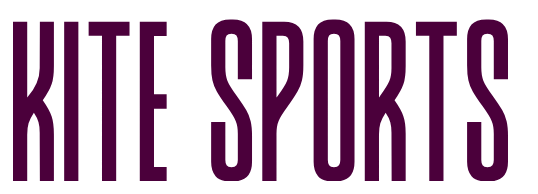In the fast-paced world of team dynamics, we have continually sought methods to gauge and enhance our collective performance. Understanding that teamwork is at the heart of any successful endeavor, we recognize the importance of critically evaluating how we function together.
In our quest for improvement, we have identified six pivotal evaluation methods that provide insightful perspectives into our team’s efficiency and effectiveness. These methods not only highlight our strengths but also shed light on areas that require further development.
By embracing these evaluation techniques, we move beyond mere observation, delving into actionable insights that drive our progress forward. Our shared goal is to foster an environment where every team member thrives, contributing to a harmonious and productive workplace.
As we explore these methods, we invite you to join us in refining our approach, ensuring that we consistently achieve our objectives while nurturing a culture of continuous improvement.
Key Evaluation Methods:
-
Surveys and Questionnaires
Designed to gather anonymous feedback from team members on various aspects of the team dynamics. -
Performance Metrics
Analyzing data-driven metrics that quantify productivity and efficiency. -
Peer Reviews
Allowing team members to evaluate each other’s contributions and teamwork skills. -
Self-Assessments
Encouraging individuals to reflect on their own performance and areas for growth. -
360-Degree Feedback
Collecting input from all levels within the organization to gain a comprehensive view of team performance. -
Observation and Monitoring
Utilizing direct observation and monitoring to assess team interactions and workflow in real-time.
By actively engaging with these methods, we enhance our understanding of team dynamics and empower every team member to contribute to our shared success.
Survey Insights
Many surveys reveal diverse insights into how team performance evaluations are perceived and implemented. We find comfort in knowing that we’re not alone in our quest to understand how effective evaluations can truly be.
Survey insights show that incorporating peer feedback is essential in creating a well-rounded evaluation system. By allowing team members to share their perspectives, we foster a sense of belonging and mutual respect. It’s not just about pointing out flaws but celebrating strengths as well.
Moreover, 360-degree input has become a cornerstone of comprehensive evaluations. When we embrace this method, we gain a more holistic view of our team’s dynamics.
- Our colleagues
- Supervisors
- Even subordinates
These groups provide valuable insights that might otherwise go unnoticed. This approach ensures everyone feels heard and valued.
By combining these methods, we’re not just evaluating performance; we’re building a supportive environment where everyone thrives. Together, we’re creating a culture of continuous improvement and encouragement.
Data Analysis
To truly understand our team’s performance, we’ll delve into the data, uncovering patterns and insights that drive meaningful improvements.
Survey Insights give us a comprehensive view of our team’s strengths and areas for growth. These insights help us align our actions with our collective goals, fostering a sense of unity and purpose.
Engaging with 360-Degree Input allows us to evaluate performance from multiple perspectives. This holistic approach ensures that we’re not relying solely on one source of feedback but are considering diverse viewpoints. It enriches our understanding and encourages us to support each other in our professional journey.
Moreover, incorporating data from Peer Feedback provides us with real-time, on-the-ground insights. It builds a culture of openness and trust, where everyone’s voice is valued.
By focusing on data analysis, we can make informed decisions that resonate with our team’s core values, ensuring everyone feels included and motivated to contribute to our shared success.
Peer Feedback
Incorporating peer feedback into our evaluation process allows us to gain diverse perspectives that enhance our collective growth. When we embrace each other’s insights, we create a supportive environment where everyone feels valued.
By using Survey Insights, we can effectively gather Peer Feedback that helps us understand our strengths and areas for improvement. This not only fortifies our bonds but also encourages a culture of openness and trust.
A 360-Degree Input approach ensures that feedback comes from multiple angles:
- Peers
- Supervisors
- Subordinates
This comprehensive view helps us see the bigger picture, fostering a sense of belonging and shared responsibility. We can then identify patterns and trends that might otherwise go unnoticed, ultimately leading to more informed decisions.
By actively engaging in Peer Feedback, we’re not just evaluating performance; we’re nurturing a community that thrives on collaboration and mutual respect. Together, we can build a more cohesive and effective team, where everyone contributes to our shared success.
Self-Reflection
Self-reflection empowers us to critically assess our own performance and identify areas where we can grow and excel. By engaging in this introspective process, we not only enhance our individual skills but also strengthen our sense of community within the team.
It’s a collective journey where we all strive to understand our roles and contributions better. Through self-reflection, we can align our personal goals with the team’s objectives, fostering a sense of belonging and shared purpose.
Incorporating Survey Insights during self-reflection helps us gain a clearer perspective on our strengths and weaknesses. These insights, combined with Peer Feedback, offer a comprehensive view of how others perceive our contributions.
- Peer Feedback provides external viewpoints.
- Our self-reflection ensures we remain grounded in our own experiences and aspirations.
360-Degree Input is a valuable tool, but our self-reflection journey begins with our willingness to look inward. By embracing this, we nurture an environment of continuous improvement and mutual support.
360-Degree Input
Incorporating a 360-degree input approach allows us to gather comprehensive performance feedback from various perspectives within the team and organization.
This method ensures that everyone feels valued and heard, fostering a sense of belonging and collaboration.
Data Collection and Discussion:
- We use Survey Insights to collect data.
- This data fuels meaningful discussions about our strengths and areas for growth.
Engagement with Peer Feedback:
- By engaging with Peer Feedback, we create an environment where constructive criticism is welcomed and appreciated.
Benefits of 360-Degree Input:
- Encourages us to look beyond individual contributions and embrace the collective effort.
- Helps us understand how we impact each other’s work and support one another better.
- Acknowledges diverse viewpoints, strengthening our team dynamics.
When our voices are heard, and our opinions respected, we form stronger connections and trust within the team.
Conclusion:Let’s embrace 360-degree input as a tool to enhance our team’s performance and nurture a community where everyone thrives.
Direct Observation
Direct observation provides us with real-time insights into team dynamics and individual contributions. By watching our team in action, we can spot strengths and areas for improvement that might not surface through Survey Insights or Peer Feedback alone. This hands-on approach allows us to see how each team member interacts and performs, offering an authentic snapshot of our collective efforts.
Benefits of Direct Observation:
- Places us right in the heart of the action, unlike 360-Degree Input, which gathers perspectives from various sources.
- Helps us feel more connected and engaged with our team.
- Allows us to witness collaboration, problem-solving, and innovation as they happen.
- Fosters a sense of belonging and unity.
Complementary Nature of Direct Observation:
- Enhances Survey Insights by grounding our evaluations in firsthand observation.
- When combined with Peer Feedback, it provides a comprehensive picture of our team’s dynamics.
By leveraging direct observation, we ensure our evaluations are well-rounded and that our team feels valued and understood.
Team Interaction
Understanding Team Interaction
Understanding team interaction is crucial for fostering effective communication and collaboration among members.
Survey Insights
When we tap into Survey Insights, we gain a deeper understanding of how our team dynamics operate. These insights reveal patterns and preferences in communication styles, helping us address any disconnects.
Valuing Peer Feedback
- By valuing Peer Feedback, we create an environment where everyone feels heard and appreciated.
- Constructive feedback from peers offers a unique perspective that can highlight strengths and areas for improvement, encouraging us to grow both individually and collectively.
Embracing 360-Degree Input
Embracing 360-Degree Input ensures a comprehensive evaluation of team interaction. This method gathers feedback from all directions:
- Peers
- Supervisors
- Subordinates
This approach provides a well-rounded view of our team’s performance. It helps us recognize how our actions impact the team and vice versa.
Integration and Outcome
When we integrate these methods, we strengthen our sense of belonging, as each member feels accountable and valued. Our shared insights pave the way for a more cohesive and effective team dynamic.
Empowering Success
To empower success, we must equip our team with the tools and support they need to thrive. By fostering an environment where everyone feels they belong, we can unlock the potential within each team member.
Utilizing Survey Insights
- We gather valuable data to understand the team’s collective needs and preferences.
- This insight helps us tailor our strategies to ensure that everyone feels heard and valued.
Peer Feedback
- Encourages open communication and builds trust among team members.
- By sharing constructive feedback, we help each other grow and develop professionally.
360-Degree Input
- Provides a holistic view of performance by incorporating perspectives from peers, supervisors, and even subordinates.
- This comprehensive approach ensures that we’re not missing any critical angles in our evaluations.
Together, these methods create a supportive culture where success is a shared goal. When we invest in our team’s growth, we cultivate a thriving environment where everyone can succeed.
How can we ensure the evaluation methods align with the company’s overall strategic goals?
To ensure our evaluation methods align with the company’s strategic goals, we must first clearly define those objectives. By understanding what the organization aims to achieve, we can tailor our assessment approaches accordingly.
Regularly reviewing and adjusting our evaluation processes will help us stay on track and ensure that we are measuring the right metrics that contribute to the company’s overall success. This proactive approach will lead to more effective performance evaluations.
What role does team leadership play in influencing the outcomes of these evaluation methods?
Team leadership significantly influences the outcomes of evaluation methods.
Effective leaders inspire and guide team members, fostering a culture of collaboration and excellence. By setting clear expectations, providing support, and offering constructive feedback, leaders enhance team performance and ensure alignment with strategic goals.
Strong leadership encourages:
- Accountability
- Motivation
- Continuous improvement
Ultimately, these factors drive the success of evaluation processes and contribute to overall organizational success.
How can we address potential biases in team performance evaluations?
To address potential biases in team performance evaluations, we focus on creating fair assessment processes.
Key Strategies:
-
Clear Evaluation Criteria
- Implement specific and measurable criteria for evaluations to ensure consistency and clarity.
-
Training on Unconscious Biases
- Provide training sessions for all assessors to recognize and mitigate unconscious biases.
-
Open Communication
- Encourage open dialogue among team members to gain diverse perspectives and insights.
-
Constructive Feedback
- Offer regular and constructive feedback to help team members understand and improve their performance.
-
Transparency and Accountability
- Emphasize transparency in the evaluation process and hold evaluators accountable for their assessments.
By integrating these strategies, we foster a culture of trust and fairness, ensuring evaluations are objective and comprehensive.
Conclusion
In conclusion, evaluating team performance through various methods is crucial for fostering success. These methods include:
- Surveys
- Data analysis
- Peer feedback
- Self-reflection
- 360-degree input
- Direct observation
By actively engaging with team members, providing constructive feedback, and promoting open communication, you can empower your team to achieve their goals and constantly improve.
Keep utilizing these evaluation methods to drive continuous growth and enhance overall team performance.

